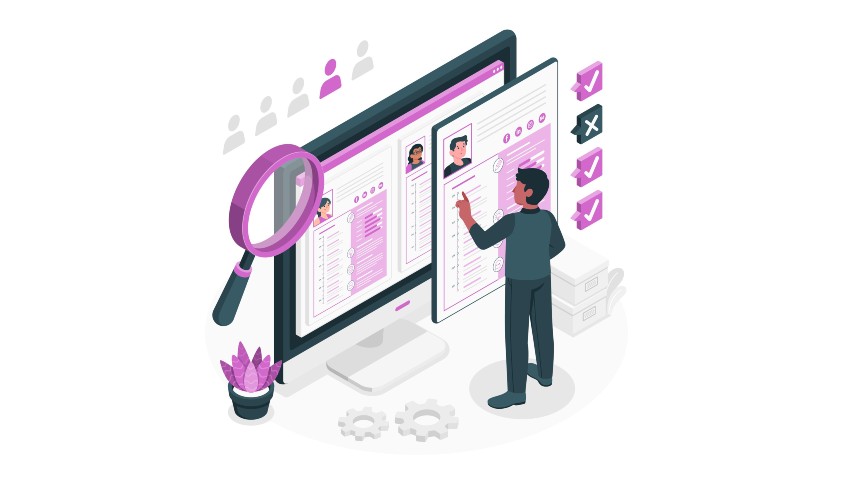As we venture further into the digital age, the concept of a paperless onboarding system has become a significant aspect in many organizations. This system represents a progressive shift from traditional paper-based processes to a digitalized platform that automates the onboarding process, enhancing efficiency, and reducing the margin for error.
A paperless onboarding system is an innovative solution that takes advantage of technology to streamline and improve the induction process for new hires. It is a comprehensive digital platform that allows for the effective management of tasks such as employee orientation, document collection, and training processes. This system eliminates the need for physical paperwork, making the process more sustainable and efficient.
It provides a seamless experience for new hires, allowing them to complete necessary procedures online, at their convenience. The transition to a paperless onboarding system not only makes the process more efficient for the HR department but also creates a positive first impression on new employees, setting the tone for their subsequent work experience.

Benefits of Going Paperless
Transitioning to a paperless environment offers numerous benefits, primarily in terms of efficiency, cost-effectiveness, and environmental conservation. Businesses and individuals can benefit greatly from the convenience and speed that digitalization brings. Instead of spending time searching for physical documents, digital files can be accessed instantaneously and shared effortlessly, improving productivity levels. Digital files also eliminate the risk of losing important documents due to damage or misplacement.
Financially, going paperless can lead to significant savings. The costs associated with purchasing paper, ink, and other office supplies can add up over time. Moreover, expenses related to document storage and disposal, such as filing cabinets or shredding services, are also eliminated. Instead of allocating resources to manage physical documents, businesses can invest in enhancing their digital infrastructure, which often leads to improved operational efficiency.
Environmentally, a shift towards a paperless system reduces deforestation and waste production. Each year, millions of trees are cut down for paper production, contributing to habitat destruction and climate change. By reducing the demand for paper, we can help preserve forests and biodiversity. Furthermore, less paper waste means less space taken up in landfills, reducing environmental pollution.
On a security front, digital documents can be encrypted, password-protected, and backed up to secure cloud storage, offering superior protection against theft or loss. In addition, digitalization enables businesses to implement access controls, ensuring that sensitive information can only be accessed by authorized personnel.
Lastly, the digital era has ushered in tools such as electronic signatures and digital forms, which streamline processes that traditionally relied heavily on paper. These tools not only save time but also improve the customer experience, as they allow for quick and easy completion of forms, contracts, and agreements.
In conclusion, while the transition to a paperless environment requires an initial investment in digital tools and training, the long-term benefits in terms of cost savings, increased efficiency, environmental conservation, and enhanced security are substantial and far-reaching.
Essential Components of a Digital Onboarding Process
Digital onboarding is a crucial, multifaceted process that requires several essential components to function optimally. The first component is a user-friendly interface. This is crucial to ensure easy navigation and accessibility for new users. Second, a comprehensive, well-structured training program forms the backbone of the onboarding process. This should include step-by-step tutorials, guidelines, and resources that can help a new user understand the nuances of the system quickly.
Next, automated workflows help in streamlining procedures and reducing the margin of error. The integration of AI and machine learning can enhance this automation by predicting user behavior and personalizing the onboarding experience. Another critical component is the use of analytics. By tracking and analyzing user data, companies can gain valuable insights to refine their onboarding process, making it more effective and efficient.
Moreover, having a robust support system is vital. This could include a dedicated support team, FAQs, chatbots, or a community forum to assist new users with any issues they may encounter during the onboarding process. Also, ensuring data security and privacy is paramount in the digital world. New users need to know their data is safe, and this trust can be built through transparent communication about the company’s data protection measures.
Finally, one cannot forget the importance of feedback in the digital onboarding process. By actively seeking user feedback, companies can learn about the bottlenecks in their processes and work towards enhancing the user experience. In conclusion, a successful digital onboarding process is a blend of various components, each playing its unique role in ensuring a smooth transition for new users in the digital environment.

Step-by-Step Guide to Implementing a Paperless Onboarding System
Implementing a paperless onboarding system can greatly streamline your business operations while enhancing the overall experience of new hires. The shift begins with a comprehensive evaluation of your current process, identifying areas that are ripe for digital transformation. Next, you need to select the right digital onboarding platform that suits your company’s needs. Look for features like customizable forms, automated compliance checks, and integration with other HR systems. After choosing the platform, you need to create a digital onboarding process. This includes setting up workflows, creating digital forms, and establishing automated reminders. Once everything is set up, conduct a trial run with a small group to identify any potential issues. Use feedback from this trial run to refine the system. When you’re satisfied with the process, roll it out company-wide. Remember to provide training to HR staff and new hires on how to use the new system. It’s also essential to continuously review the process and make adjustments as needed. Implementing a paperless onboarding system not only saves resources but also improves the efficiency and effectiveness of your onboarding process. It facilitates a smoother transition for new hires, making them feel more welcome and better equipped to start their new roles.
Best Practices for a Smooth Transition
The process of transition, whether within a personal context or corporate environment, can often be fraught with challenges and uncertainties. However, following some best practices can ensure a smooth transition that minimally disrupts daily operations and maximizes productivity. First and foremost, comprehensive planning is essential. This involves outlining the transition’s objectives, identifying potential obstacles, and creating a detailed timeline.
Proactive communication is equally critical, ensuring all parties involved understand their roles and responsibilities, and are kept updated on progress. This reduces confusion and fosters a sense of inclusion and ownership. Another key practice is to provide adequate training and support, equipping individuals with the necessary skills and knowledge to navigate the change effectively. It’s also beneficial to have a contingency plan in place to manage any unforeseen circumstances that may arise during the transition.
Lastly, it is important to adopt a flexible mindset, being open to adjustments and revisions as needed. This adaptability allows for improved problem-solving and decision-making, thereby facilitating a smoother transition. By adhering to these practices, any transition can be handled efficiently and effectively, minimizing stress and maximizing success.

Conclusion and Future Steps
In conclusion, the analysis and evaluation of the current scenario have led to the identification of potential gaps and areas for improvement. The findings have highlighted the need for more rigorous and comprehensive strategies to enhance the efficiency and effectiveness of our systems and processes. The results of the study have also indicated the potential for the application of innovative and advanced technologies to address the identified issues.
In terms of future steps, it is crucial to formulate a systematic and strategic course of action that takes into account the findings of this study. This involves conducting more in-depth and extensive research to further understand the nature of the issues and to identify the most effective and efficient solutions. It is also important to continuously monitor and evaluate the impact and effectiveness of the implemented strategies to ensure that they are achieving the desired outcomes.
Moreover, the exploration and adoption of emerging technologies and methodologies should also be considered as they hold the potential to significantly enhance our capabilities and capacities. The use of data analytics, for instance, can facilitate more accurate and timely decision-making. On the other hand, the integration of artificial intelligence can allow for more efficient and effective operations.
In addition, it is equally important to invest in capacity-building and skills development to ensure that our team is adequately equipped to face the challenges and demands that may arise in the course of implementing our future strategies. This includes providing continuous training and education, as well as creating a conducive and supportive environment for learning and growth.
Ultimately, the success of our future steps will largely depend on our commitment to continuous improvement and innovation, as well as our ability to adapt to the ever-changing landscape. Therefore, it is crucial to maintain an open and flexible mindset and to embrace change as a necessary and valuable part of our journey towards achieving our objectives.
